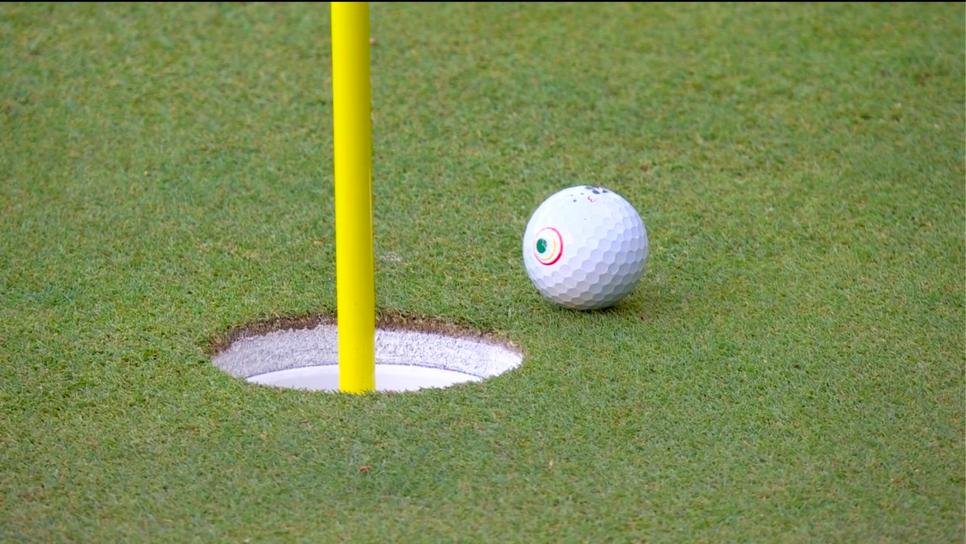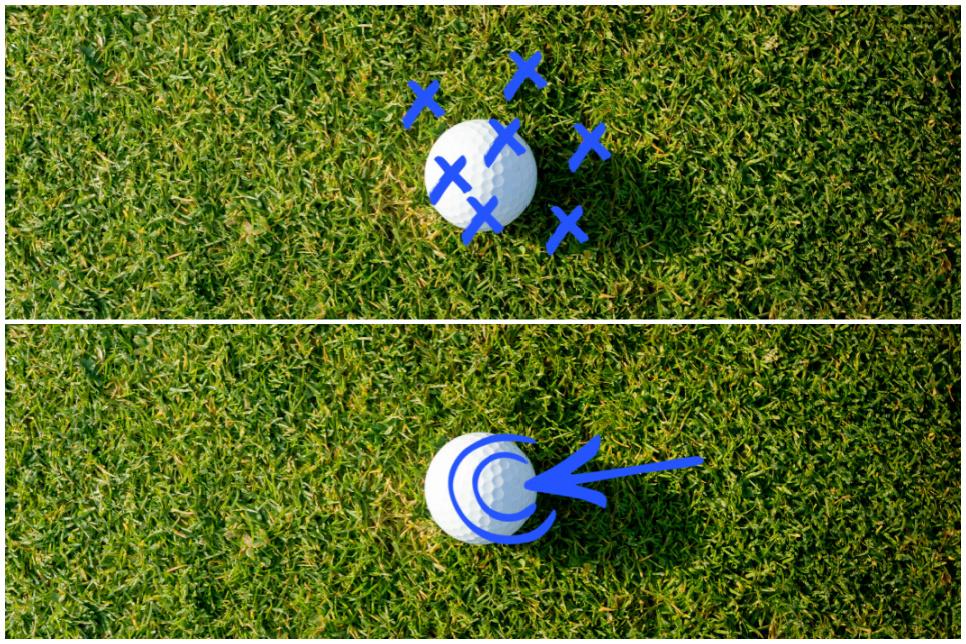AUGUSTA, Ga. — Jason Day was left of the green on Augusta National’s famed 12th hole, the most secluded part of the course.
As his low-running chip steamed towards the hole, the television camera zoomed tight onto the golf ball. When it finally stopped short just a few inches from the hole, it revealed a multi-colored eyeball of sorts printed onto the golf ball.
So, what is that thing?

The design is the selling point of Bridgestone’s new mindset golf balls, but the science behind it is a concept called “quiet eye.”
The term was coined by Joan Vickers, Professor Emerita of Kinesiology at the University of Calgary. In a fascinating study, Vickers analyzed the eye movements of basketball players as they performed various actions as they shot a basketball. She found that the best shooters were the ones whose eyes stayed fixed on the place when they were trying to shoot. Basketball players who missed more shots tended to move around more. Their eyes, and focus, weren’t as “quiet.”
Learning to quiet your eyes
Vicker’s research was a fascinating study that makes intuitive sense, and one that quickly started being replicated across other sports. In golf, researchers found that higher handicappers tend to look not just at the ball, but also at the general area around the golf ball. Better golfers tended to focus their eyes on one very specific part of the golf ball, and keep them there.
The takeaway here is simple: Quieting your eyes, and fixing on one specific part of the golf ball will probably help you.
There are a few reasons for this.

First, fixing your eyes in place can limit head movement, which can help prevent side-to-side swaying and other excess movements that can make the action itself hard to repeat. This is true not just in golf, but other sports that have studied the benefits of quiet eye.
“Every slight adjustment of head movement requires about double the amount of adjustment closer to the ball,” Tom House, the legendary throwing coach to multiple pitchers and quarterbacks and cofounder of the Mustard app.
Perhaps more importantly, though, that steady fixation on the golf ball has the effect of not just quieting your eyes, but the most active part of your mind.
“The zone is your brain’s inverse reaction to the stimuli of the environment surround it. So if there are 50,000 people screaming, your focus is a pinpoint,” House says. “When you fixate on one point, it allows your brain to react to the task without active thought inhibiting your athletic movement.”
There are lots of ways pros try to quiet their eyes, and fix on one point of the golf ball.
Bridgestone’s golf balls are unique in that it provides different visual cues—golfers are supposed to move through the colors before locking onto the green—but Tiger Woods has used the logo of the golf ball itself as his focus point. Some players draw dots and lines onto their golf balls which they use for the same purpose. Other players use specific designs of the golf ball itself.
Many methods, but all serving the same purposes: Quieting your eyes, locking onto a specific part of the golf ball, and making better swings because of it.
More From Golf Digest  Interactive A Comprehensive History Of Every Change Made To Augusta National Golf Club
Interactive A Comprehensive History Of Every Change Made To Augusta National Golf Club  Full Swing Thoughts ‘Full Swing 2’: The good, the bad and the provocative MORE GOLF DIGEST MASTERS COVERAGE
Full Swing Thoughts ‘Full Swing 2’: The good, the bad and the provocative MORE GOLF DIGEST MASTERS COVERAGE
Masters 101: Answering all your frequently asked question
How to watch the 2024 Masters
Power Rankings: Every player in the Masters field, ranked
50 defining Masters Moments, ranked
The bogey golfer’s guide to surviving Augusta National
5 shots that players should NEVER hit at Augusta National
15 people who ended up in the Masters penalty box
The most memorable Rules issues in Masters history
In search of the greatest Augusta National
The Masters’ other jackets: Why working tournament week has its perks
The greatest Masters round time has forgotten
The Champions Dinner Tell-All, from those inside the room
This article was originally published on golfdigest.com



